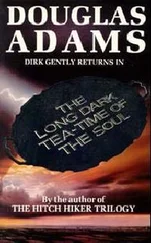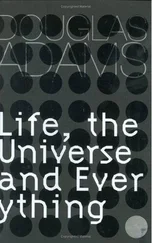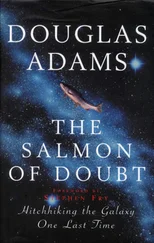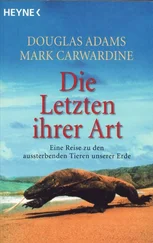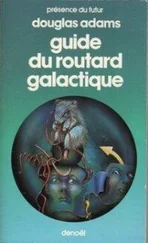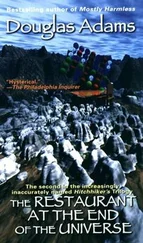Douglas Adams - Last chance to see
Здесь есть возможность читать онлайн «Douglas Adams - Last chance to see» весь текст электронной книги совершенно бесплатно (целиком полную версию без сокращений). В некоторых случаях можно слушать аудио, скачать через торрент в формате fb2 и присутствует краткое содержание. Жанр: Фантастика и фэнтези, на английском языке. Описание произведения, (предисловие) а так же отзывы посетителей доступны на портале библиотеки ЛибКат.
- Название:Last chance to see
- Автор:
- Жанр:
- Год:неизвестен
- ISBN:нет данных
- Рейтинг книги:5 / 5. Голосов: 1
-
Избранное:Добавить в избранное
- Отзывы:
-
Ваша оценка:
- 100
- 1
- 2
- 3
- 4
- 5
Last chance to see: краткое содержание, описание и аннотация
Предлагаем к чтению аннотацию, описание, краткое содержание или предисловие (зависит от того, что написал сам автор книги «Last chance to see»). Если вы не нашли необходимую информацию о книге — напишите в комментариях, мы постараемся отыскать её.
Last chance to see — читать онлайн бесплатно полную книгу (весь текст) целиком
Ниже представлен текст книги, разбитый по страницам. Система сохранения места последней прочитанной страницы, позволяет с удобством читать онлайн бесплатно книгу «Last chance to see», без необходимости каждый раз заново искать на чём Вы остановились. Поставьте закладку, и сможете в любой момент перейти на страницу, на которой закончили чтение.
Интервал:
Закладка:
When Captain Cook saw it from the sea in 1773 he recorded that `inland as far as the eye can see the peaks are crowded together as to scarcely admit any valleys between them'. The great forked valleys have been carved out by glaciers over millions of years, and many are flooded by the sea for many miles inland.
Some of the cliff faces drop hundreds of feet sheer into the water, and continue sheer for hundreds of feet below it. It still has the appearance of a work in progress. Despite relentless lashing by the wind and rain it is sharp and jagged in its immensity.
Much of it has still not been explored at ground level. The only roads that approach the Fiordland National Park peter out quickly in the foothills, and most visiting tourists only ever explore the fringe scenery. A few backpackers plunge further in, and very, very few experienced campers try to get anywhere near the heart of it. Looking out across its serrated masses and its impossibly deep ravines, the very idea of trying to cross it on foot seems ludicrous, and most serious exploration is of small local pockets, reached by helicopter, which is how we came to it.
Bill Black is said to be one of the most experienced helicopter pilots in the world, and he needs to be. He sits like a cuddly old curmudgeon hunched over his joystick and chews gum slowly and continuously as he flies his helicopter directly at sheer cliff faces to see if you'll scream. Just as the helicopter seems about to smash itself against the rock wall an updraught catches it and wafts it impossibly up and over the top of the ridge which then falls away again precipitously on the other side, leaving us swinging out over a void. The valley lurches sickeningly away beneath us and we drop down a few feet, twisting to face up the next ravine as we do so, as if we are being swung by a giant on the end of an immense rubber rope.
The helicopter puts its nose down and goes thrumming its way along the ravine wall. We startle a couple of birds that scatter up into the air way ahead of us, flying with fast sharp wing beats. Mark quickly scrabbles under his seat for his binoculars.
'Keas!' he says. I nod but only very slightly. My head already has quite enough contrary motions to contend with.
`They're mountain parrots,' says Mark. 'Very intelligent birds with long curved beaks. They can rip the windscreen wipers off cars and often do.'
I'm always startled by the speed with which Mark is able to recognise birds he's never seen before, even when they're just a speck in the distance.
'The wing beat is very distinctive,' he explains. 'But it would be even easier to identify them if we weren't in a helicopter with all this noise. It's one of those birds which very helpfully calls out its own name when it's flying. Kea! Kea! Kea! Birdwatchers love them for that. It would be great if the Pallas's grasshopper warbler would learn the same trick. Make warbler identification a lot easier.' He follows them for a few seconds more, until they round a large outcrop and disappear from view. He puts down his binoculars. They are not what we have come to look for.
`Interesting birds, though, with some odd habits. Very fussy about getting the design of their nests right. There was one kea nest that was found which the birds had started to build in 1958. In 1965 they were still sorting it out and adding bits to it but hadn't actually moved in yet. Bit like you in that respect.'
As we reach the narrow end of the ravine we pause briefly a few yards from a cataract crashing down its sides to fill the river hundreds of feet beneath us. We peer out at it from our floating glass bubble and I feel suddenly like a visitor from another planet, descending from the sky to study the minutiae of an alien world. I also feel sick but decide to keep this information to myself.
With a slight shrug Bill heaves the helicopter way up out of the ravine and into the clear air again. The sheer immensity of the volumes of rock and space that turn easily around us continually overwhelms the spatial processors of the brain. And then, just when you think that you have experienced all the wonders that this world has to offer, you round a peak and suddenly think you're doing the whole thing over again, but this time on drugs.
We are skimming over the tops of glaciers. The sudden splurge of light blinds us for a moment, but when the light coalesces into solid shapes they are like shapes from dreams. Great top-heavy towers resembling the deformed torsos of giants; huge sculpted caves and arches; and here and there the cracked and splayed remains of what looks like a number of Gothic cathedrals dropped from a considerable height: but all is snow and ice. It's as if the ghosts of Salvador Dali and Henry Moore come here at night with the elements and play.
I have the instinctive reaction of Western man when confronted with the sublimely incomprehensible: I grab my camera and start to photograph it. I feel I'll be able to cope with it all more easily when it's just two square inches of colour on a light box and my chair isn't trying to throw me round the room.
Gaynor, our radio producer, thrusts a microphone at me and asks me to describe what we're looking at.
°What? I say, and gibber slightly.
`More,' she says, `more!'
I gibber some more. The blades of the helicopter rotor are spinning mere inches from a tower of ice.
She sighs. 'Well, it will probably edit up into something,' she says and turns the tape off' again.
We take one more mind-wrenching turn around the giant ice sculptures and then head off down the ravines once more, which now seem almost domestic by comparison.
There is one other passenger in the aircraft: Don Merton, a benign man with the air of a vicar apologising for something. He sits quietly, occasionally pushing his spectacles back up the bridge of his nose and murmuring, `Yes, ah yes,' to himself, as if this all confirmed something he'd always rather suspected. In fact he knows the area very well. He works for the New Zealand Department of Conservation and has probably done more than any man living to preserve the threatened birds of New Zealand.
We are once again very close to the rock wall of the ravine with hundreds of feet of sheer drop beneath us, and I notice that we are following a long narrow path that runs along an impossibly narrow ledge inclining gradually upwards towards a spur overlooking a broader sweep of valley. I suffer from terrible vertigo.
Being six foot five means I sometimes get giddy just standing up, and the very sight of the path gives me black swimmy nightmares.
`We used to come up that quite a lot,' murmurs Don, leaning forward to point at it.
I look at him in astonishment and then back at the terrifying path. We are hovering now just feet from it and the dull thudding of the rotor blades is reverberating back at us. The pathway is just a foot or two wide, grassy and slippery.
Yes, I suppose it is a bit steep,' says Don with a gentle laugh, as if that was the only reason they didn't do it by bicycle. `There's a track and bowl system up on top of that ridge ahead of us. Want to take a look?
We nod nervously and Bill flies on.
I had heard the term `track and bowl system' bandied about by New Zealand zoologists before, and they had bandied it about so casually that I hadn't immediately liked to say that I hadn't the faintest idea what they were talking about. I decided to start from the premise that it was something to do with satellite dishes and work it out gradually from there. This led to me being in a state of complete incomprehension for about two days before I finally plucked up the courage to admit my ignorance.
A track and bowl system is nothing whatever to do with satellite dishes. It does, however, share with them this feature - that it is likely to be found in high, open places. It's a rather odd name for an extremely odd phenomenon. A track and bowl system doesn't look particularly dramatic, and indeed if you were not a New Zealand zoologist you might pass one by without even noticing it, but it is the site of one of the most peculiar pieces of behaviour performed by any animal on earth.
Читать дальшеИнтервал:
Закладка:
Похожие книги на «Last chance to see»
Представляем Вашему вниманию похожие книги на «Last chance to see» списком для выбора. Мы отобрали схожую по названию и смыслу литературу в надежде предоставить читателям больше вариантов отыскать новые, интересные, ещё непрочитанные произведения.
Обсуждение, отзывы о книге «Last chance to see» и просто собственные мнения читателей. Оставьте ваши комментарии, напишите, что Вы думаете о произведении, его смысле или главных героях. Укажите что конкретно понравилось, а что нет, и почему Вы так считаете.

